This guide provides effective strategies for protecting hibiscus plants from pests and diseases. Pest management includes using natural predators like ladybugs and lacewings or organic pesticides. Diseases like fungal infections and bacterial diseases can be managed with proper soil care and chemical fungicides. Viral diseases can be prevented through strict sanitation measures and eco-friendly gardening solutions.
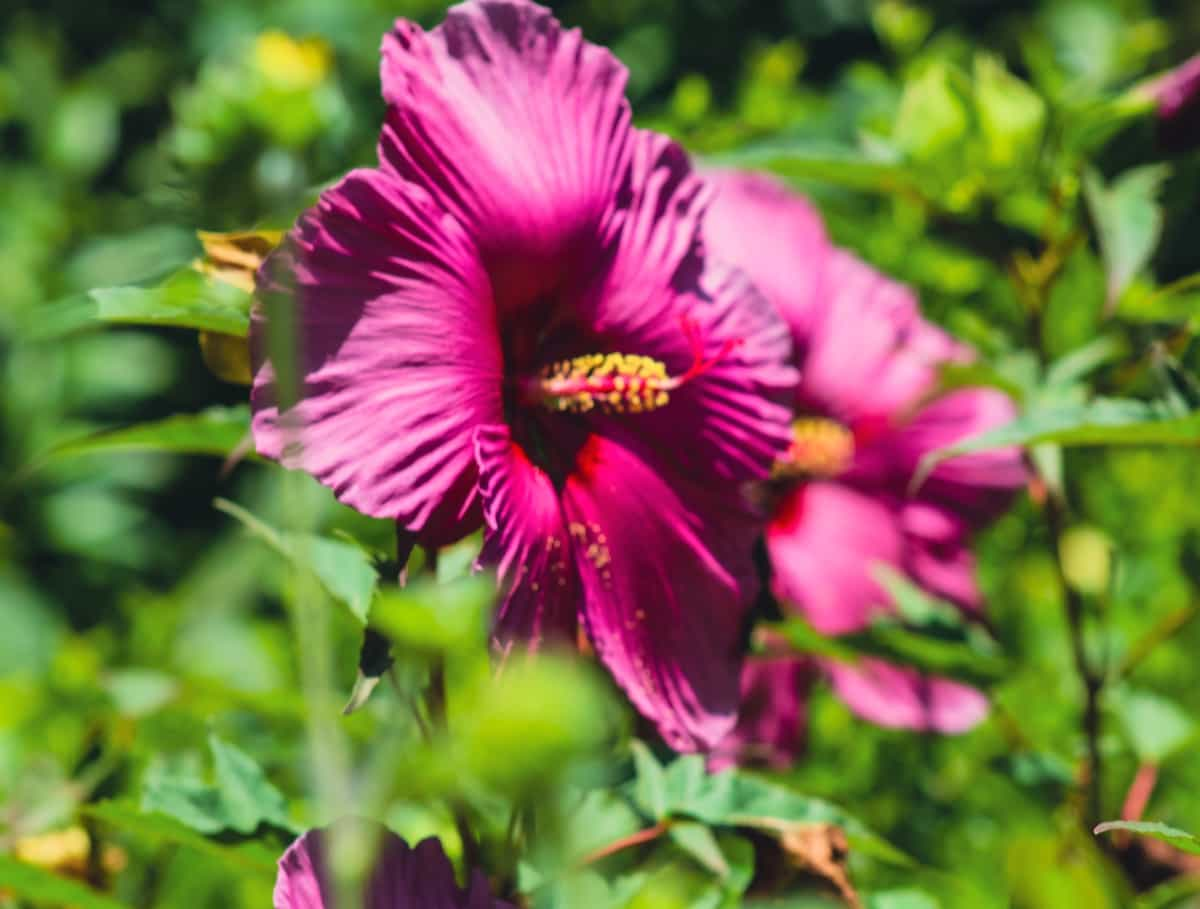
Proper watering and seasonal care are essential for hibiscus maintenance. Regular pruning promotes airflow and prevents disease spread. Integrated Pest Management (IPM) strategies offer a holistic approach to pest and disease control, incorporating beneficial insects, organic pesticides, and cultural practices to minimize environmental impact.
Combating Pests and Diseases in Hibiscus
Introduction to Hibiscus Plant Care
Hibiscus plants are beautiful flowering shrubs native to tropical and subtropical regions, with over 200 species and thousands of cultivars. They have large, showy flowers ranging from 2 to 10 inches in diameter and come in various colors, shapes, and sizes. They can grow as annuals or perennials, depending on the species and climate. Common types of hibiscus include tropical hibiscus (Hibiscus rosa-sinensis), hardy hibiscus (Hibiscus moscheutos), and rose of Sharon (Hibiscus syriacus).
Tropical hibiscus grows up to 10 feet tall and wide, with glossy green leaves and year-round flowers in warm climates. Hardy hibiscus can grow up to 6 feet tall and wide, with large flowers reaching 12 inches across. The Rose of Sharon is deciduous, growing up to 12 feet tall and wide, with yellowing leaves and flowers.
Identifying Common Pests in Hibiscus Plants
The first step is managing pests and diseases in hibiscus plants is to identify the culprits. Some of the most common pests that attack hibiscus plants are:
Aphids: These are insects that suck the sap from the stems and buds of hibiscus plants. They can cause yellowing, curling, and distortion of leaves and flowers. They also secrete and produce a sticky substance called honeydew, which can attract ants and fungal growth.
Whiteflies: These are small white insects that fly around the undersides of hibiscus leaves. They also feed sap of the plant and produce honeydew. They can cause wilting, yellowing, and dropping of leaves.
Scale insects: These are hard-shelled insects that attach themselves to the stems and leaves of hibiscus plants. They suck the sap from the plant, weaken it. They can also cause sooty mold to grow on the honeydew they excrete.
Mealybugs: These are soft-bodied insects that look like cottony masses on the stems, leaves of hibiscus plants. They also feed on the sap of the plant and produce honeydew. They can cause stunted growth, leaf drop, and bud abortion.
In case you missed it: How to Grow Hibiscus Plants and Care for Them: Check How this Guide Helps Beginners
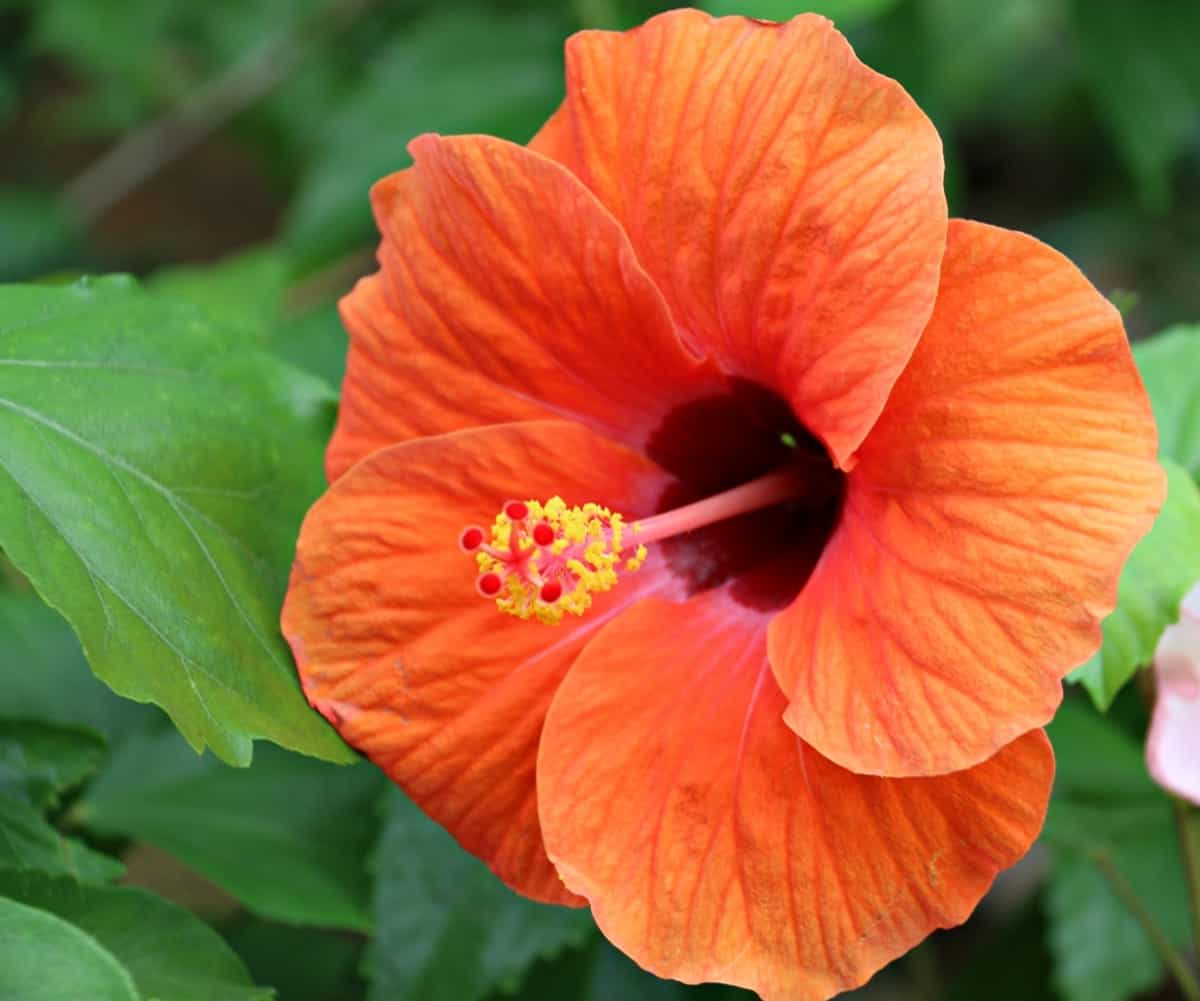
Dealing with Hibiscus Diseases
Hibiscus plants can also suffer from various fungal, bacterial, and viral diseases that can affect their health and beauty. Some of the most common diseases that affect hibiscus plants are:
Powdery mildew: This is a fungal disease causes a white and gray powdery coating on the leaves and stems of hibiscus plants. It can reduce photosynthesis, flower production, and plant vigor. It thrives in warm and humid conditions.
Leaf spot: This is a fungal or bacterial disease that causes brown and black spots on the leaves of hibiscus plants. It can also cause leaf drop, defoliation, and reduced flowering. It spreads through splashing water or infected tools.
Anthracnose: Fungal disease that causes dark brown and black lesions on the leaves, stems, flowers of hibiscus plants. It can also cause wilting, dieback, and plant death. It spreads through rain, wind, or infected tools.
Wilt disease: This is a bacterial or fungal disease that causes the leaves, stems of hibiscus plants to wilt and collapse. It can also cause root rot, stem cankers, and plant death. It infects the plant through wounds or soil.
Cultural Practices for Healthy Hibiscus Plants
The best way to prevent pests and diseases in hibiscus plants is to provide them with optimal growing conditions and proper care. Some of the cultural practices that can help you keep your hibiscus plants healthy are:
Choose resistant varieties: Some varieties of hibiscus are more resistant to certain pests and diseases than others. For example, tropical hibiscus are more resistant to aphids than hardy hibiscus. You can check with your local nursery or extension service for recommendations on suitable varieties for your area.
Plant in well-drained soil: Hibiscus plants prefer moist but well-drained soil that is rich in organic matter. Avoid planting them in heavy clay or soggy soil that can cause root rot or wilt disease.
Provide adequate sunlight: Hibiscus plants need at least six hours of full sun per day to produce abundant flowers and healthy foliage. Avoid planting them in shady or crowded areas, which can reduce air circulation and increase humidity.
Water regularly but not excessively: Hibiscus plants need regular watering to keep their soil moist. Overwatering or underwatering can stress the plant and make it more susceptible to pests and diseases. Water deeply but infrequently, allowing the top inch of soil to dry out between waterings.
Fertilize moderately but not excessively: Hibiscus plants need moderate amounts of fertilizer to support their growth and flowering. Excessive fertilization can cause excessive vegetative growth, which can attract pests and diseases. Use a balanced fertilizer like of 10-10-10 or similar, and apply it according to the label instructions.
Prune regularly but not excessively: Hibiscus plants need regular pruning to remove dead, diseased, or damaged branches and to shape the plant. Excessive pruning can weaken the plant and expose it to pests and diseases. Prune in late winter or early spring before the new growth begins.
Mulch generously but not excessively: Mulching can help hibiscus plants retain moisture, suppress weeds, and moderate soil temperature. However, excessive mulching can cause root rot or fungal diseases. Use organic mulch such as bark, straw, and compost, and apply a layer of 2-4 inches around the base, leaving some space around the stem.
In case you missed it: How to Make Flowers Bloom Faster: Naturally, Overnight, at Home, and in Water with Fertilizers
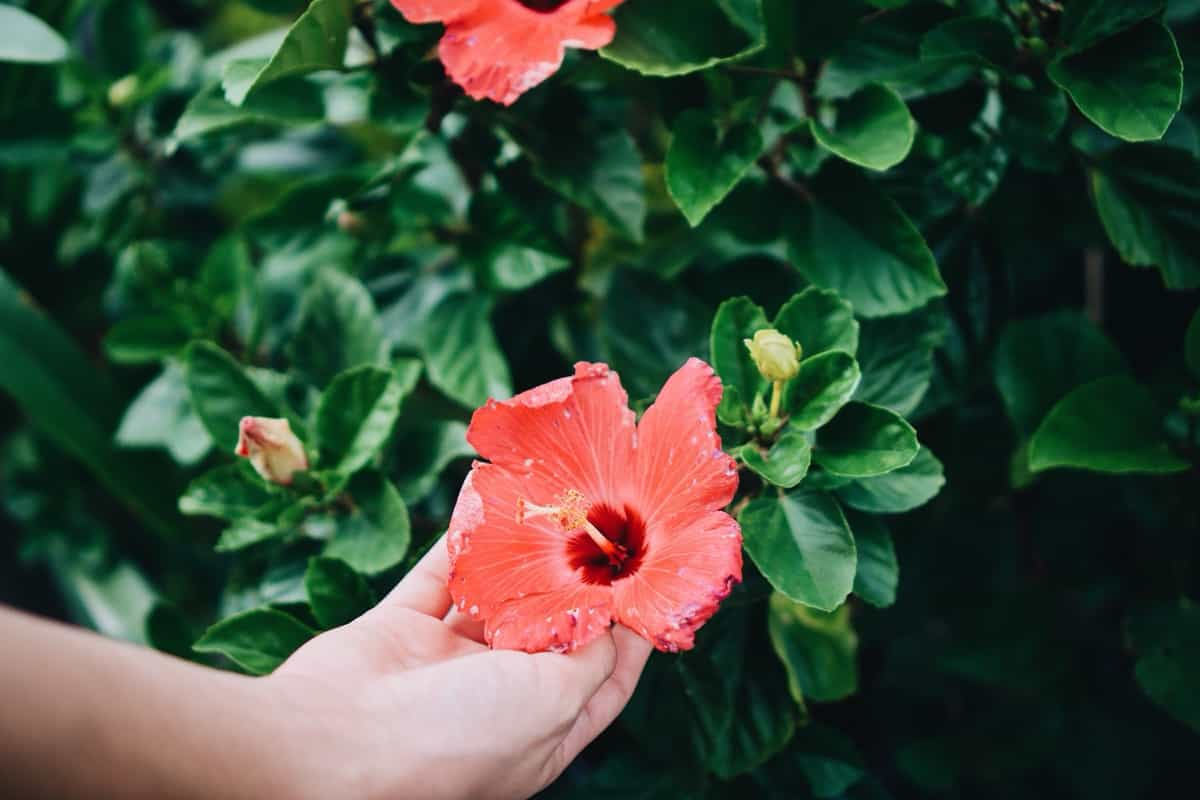
Physical Pest Control Methods
Pests on hibiscus plants can be removed or reduced through physical methods. Hand-picking, hosing, trapping, and barriers are some methods to use. Hand-picking involves using fingers or tweezers to remove visible pests like aphids, whiteflies, scale insects, mealybugs, or Japanese beetles. Hosing involves using a strong jet of water to dislodge pests from leaves and stems. Trapping involves using sticky or pheromone traps to attract and capture pests. Barriers, like row covers, netting, or screens, protect plants from flying insects but must be secure and not touch the plants.
Biological Control Strategies
To control pests on hibiscus plants, consider using biological agents like beneficial insects, predatory mites, nematodes, or bacteria. These agents can prey on or infect pests, such as ladybugs, lacewings, hoverflies, or parasitic wasps. These insects can feed on aphids, whiteflies, scale insects, mealybugs, or Japanese beetles. Predatory mites, like Phytoseiulus persimilis, feed on spider mites, common pests of hibiscus plants.
Nematodes, like Steinernema feltiae, can infect and kill fungus gnats, common pests of containers. These nematodes are purchased from garden centers or online suppliers and applied to the soil of the plants. Bacteria, like Bacillus thuringiensis (Bt), can infect and kill caterpillars, common pests of hibiscus plants. These strategies can be implemented by introducing these agents near the plants and ensuring they are well-draining and healthy.
Chemical Control Options
Chemical control options like insecticides, fungicides, or herbicides can be effective in controlling hibiscus pests and diseases. These products can kill or repel harmful organisms and prevent their spread. However, they should be used with caution as they can harm beneficial insects, animals, or humans if not applied correctly. To use chemical control effectively, follow the label instructions, wear protective clothing, gloves, and goggles, and choose the right product for a specific pest or disease.
Apply the product only to affected parts of the plant, avoid spraying flowers or buds, and apply early in the morning to late in the evening when temperatures are low and the sun is not too strong. Avoid applying the product during windy, rainy, or humid conditions, as this can reduce its effectiveness or cause it to drift to other plants or areas. Repeat the application as needed, following the label instructions.
Integrated Pest Management (IPM) for Hibiscus
Integrated pest management (IPM) is a comprehensive approach to managing hibiscus pests and diseases. It combines cultural, biological, mechanical, and chemical methods to minimize the use of pesticides and their environmental and human health impacts. IPM involves four steps:
1. Regularly monitor hibiscus plants for signs of pests or diseases, like yellowing leaves, wilting stems, holes, distorted buds, black spots, and white powdery coating.
2. Identify the pest or disease causing the problem using online resources or experts. Common pests include aphids, whiteflies, mealybugs, scale insects, powdery mildew, leaf spot, botrytis blight, rust, and wilt disease.
In case you missed it: Best Fertilizers to Increase Crop Yield: Boost the Yields of Vegetables, Fruits, Flowers, and Other Crops
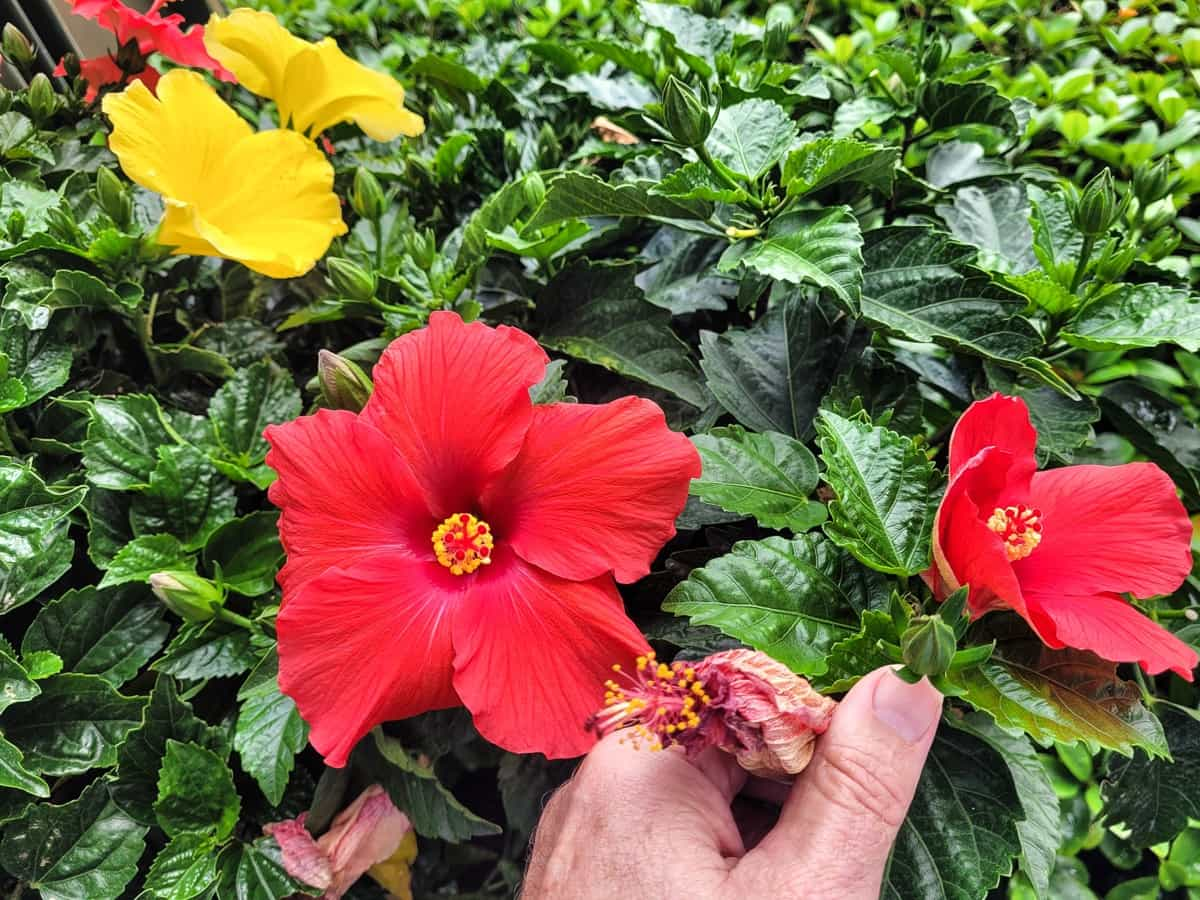
3. Evaluate the severity of the problem and decide if intervention is necessary. Factors such as the number of pests or diseased plants, damage extent, and potential for spread should be considered.
4. Choose an appropriate control method based on the evaluation. Cultural methods include improving soil drainage, pruning dead or diseased branches, watering properly, and fertilizing moderately. Biological methods involve introducing natural enemies of pests or beneficial microorganisms to combat diseases. Mechanical methods involve hand-picking pests, traps, or hoses to wash off pests or spores. Chemical methods are used only when necessary.
Seasonal Care for Hibiscus Plants
Hibiscus plants require different care depending on the season. In spring, prune your plants before they start to bloom, remove dead or damaged branches, and shape them as desired. Fertilize plants with a balanced fertilizer and water regularly. Deadhead your plants regularly during summer to encourage more blooms and prevent seed formation. Continue fertilizing and watering your plants more frequently, especially during hot or dry periods.
In the fall, stop fertilizing and reduce watering to help them prepare for winter. Protect your plants from freezing temperatures, either indoors or with a frost cloth or blanket. Keep your plants in cool, bright indoors, or sheltered, sunny spots outdoors. Water sparingly in winter, only when the soil feels dry to the touch. Avoid pruning your plants in winter, as this can stimulate new growth that is damaged by cold.
In case you missed it: Best Balcony Plants for Apartments in India: Vegetables, Flowers, and Herbs for Low-light, Full Sun
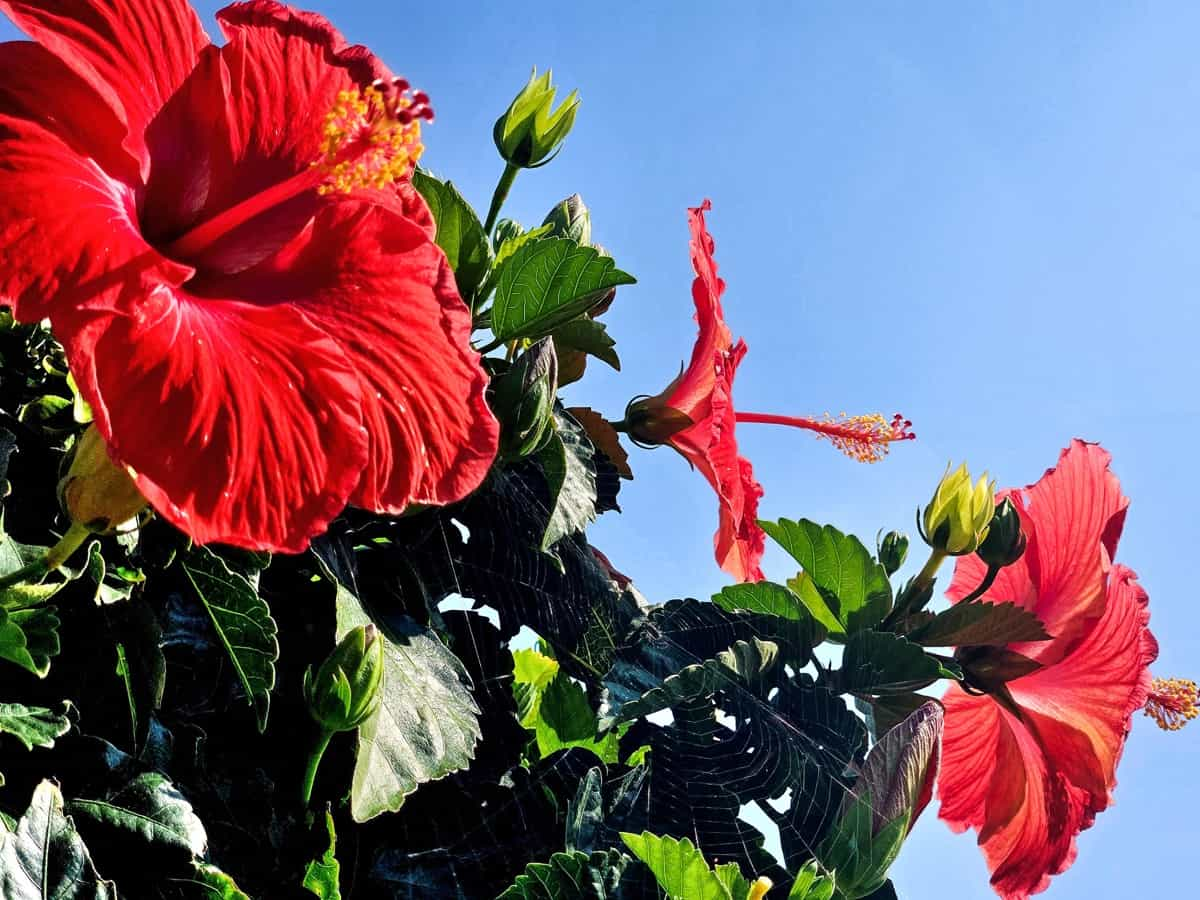
Advanced Topics in Hibiscus Care
To care for hibiscus plants, explore advanced topics such as propagation, hybridization, and bonsai. Propagation involves using seeds, cuttings, or grafting to create new plants with desirable characteristics. Seeds are easy to obtain but may not produce identical plants to the parent plant. Cuttings are reliable but require skill and equipment. Grafting involves joining two different hibiscus varieties, one as the rootstock and one as the scion, to create a new plant with desirable and improved characteristics.
Hybridization involves cross-pollinating two different varieties, either manually or naturally, resulting in unique flowers, colors, shapes, and sizes. This complex and unpredictable process requires patience and experimentation. Bonsai is a fun and rewarding hobby that involves growing hibiscus plants in small containers and pruning them regularly to create miniature versions of their natural forms. However, it requires special skills, tools, and constant attention and care.
In case you missed it: 8 Best Organic Composts to Buy in India for Flowering Plants, Vegetables, and Lawn
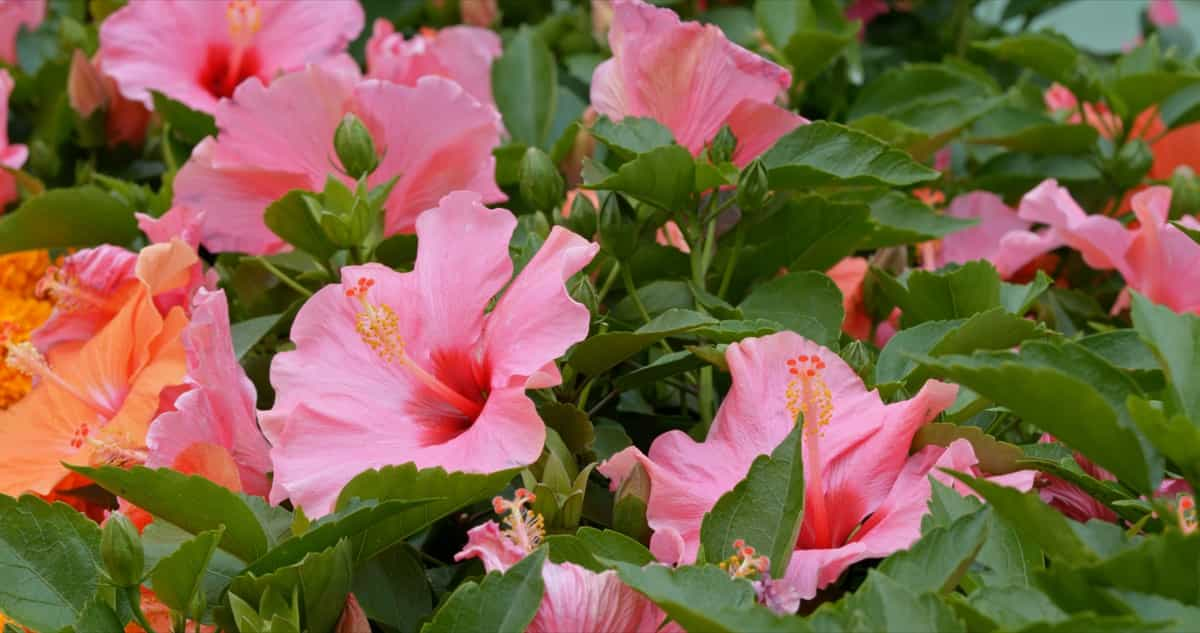
Conclusion
Hibiscus plants, known for their vibrant colors and tropical appeal, can be a valuable addition to any garden or home. However, they also face challenges from pests and diseases that can impact their beauty and health. By following these tips, you can effectively manage these issues.
- Types of Pesticides Used in Agriculture: A Beginner’s Guide
- Economical Aquaculture: A Guide to Low-Budget Fish Farming
- 15 Common Planting Errors That Can Doom Your Fruit Trees
- How to Make Houseplants Bushy: Effective Tips and Ideas
- Innovative Strategies for Boosting Coconut Pollination and Yield
- Pollination Strategies for Maximum Pumpkin Yield
- The Complete Guide to Chicken Fattening: Strategies for Maximum Growth
- Natural Solutions for Tulip Problems: 100% Effective Remedies for Leaf and Bulb-Related Issues
- Revolutionizing Citrus Preservation: Towards a Healthier, Greener Future
- Natural Solutions for Peony Leaf and Flower Problems: 100% Effective Remedies
- Maximizing Profits with Avocado Contract Farming in India: A Comprehensive Guide
- Natural Solutions for Hydrangea Problems: 100% Effective Remedies for Leaf and Flowers
- The Ultimate Guide to Choosing the Perfect Foliage Friend: Bringing Life Indoors
- From Sunlight to Sustainability: 15 Ways to Use Solar Technology in Agriculture
- The Ultimate Guide to Dong Tao Chicken: Exploring from History to Raising
- The Eco-Friendly Makeover: How to Convert Your Unused Swimming Pool into a Fish Pond
- Mastering the Art of Delaware Chicken Farming: Essentials for Healthy Backyard Flocks
- 20 Best Homemade Fertilizers for Money Plant: DIY Recipes and Application Methods
- How to Craft a Comprehensive Free-Range Chicken Farming Business Plan
- Brighten Your Flock: Raising Easter Egger Chickens for Beauty and Bounty
- How to Optimize Your Poultry Egg Farm Business Plan with These Strategies
- Subsidy for Spirulina Cultivation: How Indian Government Schemes Encouraging Spirulina Farmers
- Ultimate Guide to Raising Dominique Chickens: Breeding, Feeding, Egg-Production, and Care
- Mastering the Art of Raising Jersey Giant Chickens: Care, Feeding, and More
- Ultimate Guide to Raising Legbar Chickens: Breeding, Farming Practices, Diet, Egg-Production
- How to Raise Welsummer Chickens: A Comprehensive Guide for Beginners
- How to Protect Indoor Plants in Winter: A Comprehensive Guide
- Ultimate Guide to Grow Bag Gardening: Tips, Tricks, and Planting Ideas for Urban Gardeners
- Guide to Lotus Cultivation: How to Propagate, Plant, Grow, Care, Cost, and Profit
- Agriculture Drone Subsidy Scheme: Government Kisan Subsidy, License, and How to Apply Online
- Ultimate Guide to Raising Araucana Chickens: Breed Profile, Farming Economics, Diet, and Care
- Bringing Hydroponics to Classroom: Importance, Benefits of Learning for School Students
- Ultimate Guide to Raising Polish Chickens: Breed Profile, Farming Economics, Diet, and Care
- Ultimate Guide to Raising Australorp Chickens: Profile, Farming Economics, Egg Production, Diet, and Care
- Silkie Chicken Farming: Raising Practices, Varieties, Egg Production, Diet, and Care
- Sussex Chicken Farming: Raising Practices, Varieties, Egg Production, Diet and Care